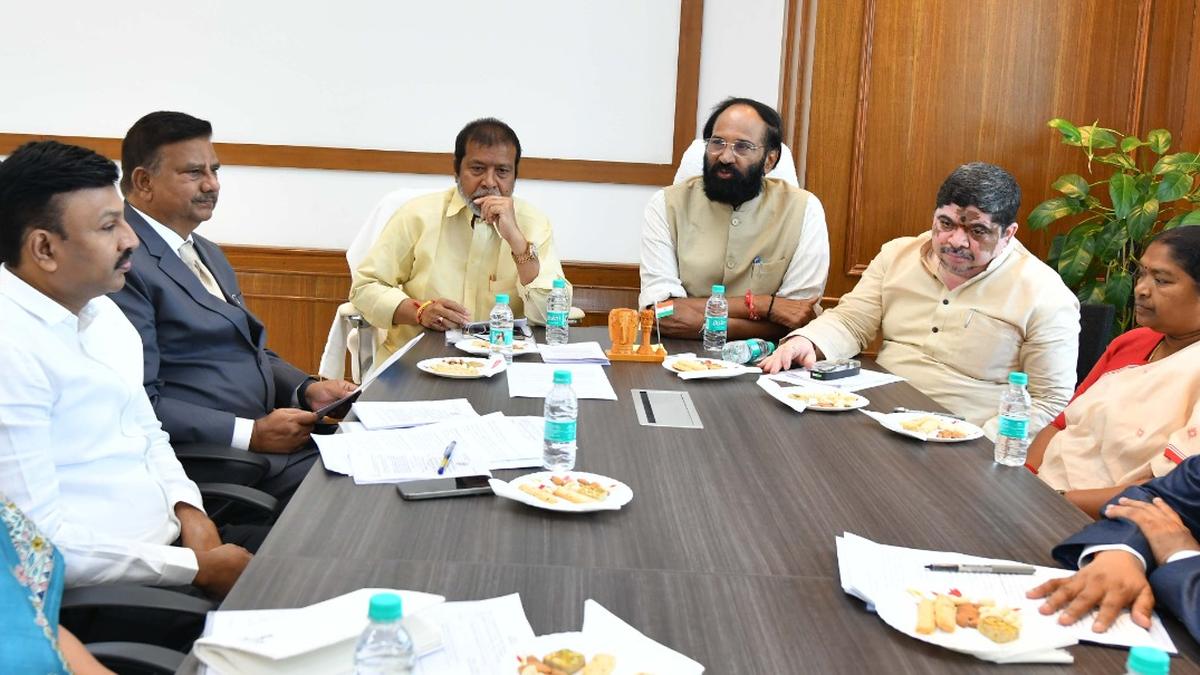
SC categorisation into three groups to come into effect from Monday
The Hindu
Scheduled Caste communities categorized into three groups based on backwardness, with reservation percentages allocated accordingly, effective Monday.
Categorisation of the Scheduled Caste communities into three groups will come into effect from Monday, coinciding with the birth anniversary of Dr. B.R. Ambedkar.
The Cabinet sub-committee headed by Irrigation and Civil Supplies Minister N. Uttam Kumar Reddy and co-chaired by Health Minister C. Damodar Rajanarsimha convened a meeting with senior officials on Sunday for giving final touches to the government order in this regard. The order would be formally released on Monday and the first copy will be presented to Chief Minister A. Revanth Reddy.
Mr. Uttam Kumar Reddy said the categorisation issue pending for decades has been realised after the Congress government took over the reins in the State. The government accordingly finalised the order keeping in view the recommendations made by the one-man commission headed by retired judge Justice Shameem Akhter.
The categorisation of 59 sub-castes among the SCs into three groups was taken up on the basis of backwardness of the SC groups. The first group comprised 15 sub-castes that were most backward among the SCs comprising 3.288 per cent of the population. It was accordingly decided to provide one per cent reservation to these sub-castes.
The second group comprising 18 sub-castes constituting 62.74 per cent population and in receipt of marginal benefits, had been given nine per cent reservation. The third group with 26 sub-castes and constituting 33.96 per cent of SC population and relatively forward compared to other groups, was given five per cent reservation.
Mr. Uttam Kumar Reddy recalled that the State government had constituted the one-man commission immediately after the Supreme Court’s historical verdict on categorisation, and the commission conducted an in-depth study on the status of these sub-castes, receiving over 8,600 representations in the process.

World Bank team visits Mysuru, holds consultations with local authorities on infrastructure projects
World Bank officials consult with Mysuru authorities on ambitious projects including utilidors, city surveillance, and water supply efficiency.

When a wintering bird doubles back to its breeding grounds to attend to the visceral business of procreation, it becomes essentially “unreachable” for the human friends it has made in its wintering grounds. It is impossible to keep tabs on the bird. One only knows its vast breeding range, which could straddle countries. It would be easier to find a needle in a haystack than trace this bird. Birder Jithesh Babu is engaged in an exercise of this kind: he is trying to trace the address of a curlew sandpiper (he made friends with, on April 18, 2025 at Kelambakkam backwaters). Jithesh would likely succeed in this effort; he is not playing blind man’s buff. The curlew sandpiper (found in its breeding plumage and likely to be around in its wintering grounds for some more time) is wearing a tag. A bird with a tag usually has a recorded history to fall back on. In a couple of days, Jithesh is likely know where exactly the Curlew sandpiper would go. The tagged Curlew sandpiper having crossed his 150-600 mm telephoto lens, he has a photo of the creature, which he has sent to Bombay Natural History Society (BNHS) along with a request for information about it. And Jithesh knows what exactly to expect. Around the same time four years ago — April 21, 2021 — he found a tagged flimingo at Pallikaranai marshland and he wrote to BNHS seeking information, and in response, Tuhina Katti, a scientist with the Wetlands Programme, BNHS, wrote back to him: “From the combination on the tag, it appears to be ‘AAP’. This individual was tagged in Panje, Navi Mumbai (on the outskirts of Mumbai) on 24 September 2018. It was resighted in Chennai in August 2020 and since then it has been resighted in Sholinganallur on a couple more occasions. It is interesting that the bird was still present there in April.” Jithesh remarks: “As this happened at the height of the second wave of the COVID-19 pandemic, the response took some time. Usually, it is prompt with a turnaround time of just two days.”

 Run 3 Space | Play Space Running Game
Run 3 Space | Play Space Running Game Traffic Jam 3D | Online Racing Game
Traffic Jam 3D | Online Racing Game Duck Hunt | Play Old Classic Game
Duck Hunt | Play Old Classic Game









